Antistatic, static electricity, dust and particle problems
Main menu:
Twist Wrapping
Support / Links - PDF > Applications_list
![]() Twist Wrapping
Twist Wrapping ![]()
Twist wrapping is commonly made of cellophane which has the necessary properties such as good printability, sufficient strength, gives a good twist wrap etc. With the introduction of new polymer films these properties can be matched at a lower cost but the films give a considerable static build-up which leads to serious production problems. Due to the static build-up there are problems in the packaging (twist wrap) machine when threading up the web from a new reel and automatic splicing is prone to fail. At the delivery from the machine there is often a pile up due to the electrostatically charged twist wrapping sticking to delivery plates and other surfaces. Static may cause serious problems on conveyors and collecting containers may be very difficult for operators to handle. Dosing machines are known to give very poor weighing results. Apart from these and other problems in the packaging process there are also problems to handle in the printing and converting processes.
Solution
It would seem an attractive solution to add antistatic agents to the films but it is usually considered impossible due to the direct contact with foodstuffs, and many agents are also strongly influencing printability, tear strength, twist wrap properties etc. Antistatic agents would also lead to a considerably higher film price.
By applying antistatic equipment in the critical positions of the production line the static problems can be mastered. It is thus necessary to install suitable antistatic equipment in the existing machinery not to discharge every product at all times but rather to discharge where there would otherwise be a problem. In the following text and pictures there is a description on a typical production line.
Twist Wrap
In a machine there is typically two small unwinds with dance roll assemblies to enable an automatic splice without stopping the production.
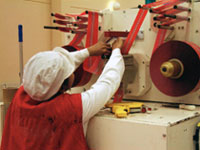
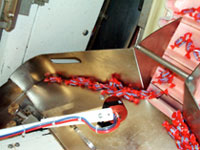
The operator prepares the new reel by threading the web and putting adhesive on the tail to make ready for the machine to perform the splice on detecting the end of the old (empty) reel.
A blowing antistatic bar will discharge both the running web and the prepared tail of the new reel. At the delivery a blow nozzle is discharging the material by gently blowing ionized air which discharges the twist wrapping and an uninterrupted flow is achieved.
Conveyors and containers
Although the material leaving the twist wrap machine has been discharged there will very quickly be a new static charge generated during the transport by contact between the piece and the conveyor or a neighbouring piece. Discharging is typically needed at the passage from one conveyor to the next where there is often the risk of material sticking to the conveyor and causing it to jam. When falling into a container there is often a considerable static charge which is being accumulated with more material falling into the container. Even if the static in such a container usually is harmless it is very unpleasant to the operator and might be a secondary accident risk with the operator jumping from the chock and falling or hurting his head. The solution is to discharge the flow of material when it leaves the conveyor and when it drops down into the container respectively. To reach most surfaces in a three-dimensional flow of material it is wise to use an ionizing fan or as is often the case with a container to get efficiency also over a wider distance.
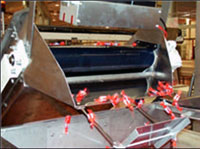
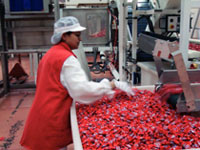
Dosing and Filling Machines
Depending on the type of machine used there might be both mechanical problems and weighing errors due to static charge. An even distribution of material and a correct weighing process requires discharging by suitable antistatic equipment, often an ionizing fan, but in some cases a single row antistatic bar without air may be sufficient.
After the dosing system the products are collected in an often funnel shaped filling tube and drop vertically down into the form fill sealing machine. Antistatic equipment is often needed both at top and bottom of the filling tube.
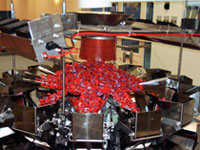
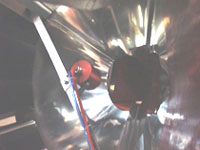
There are solutions to most problems but they often need to be tailored to fit the situation.

